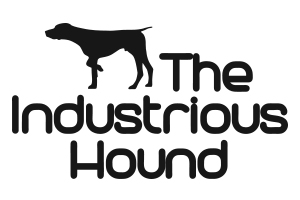Pee and poo
It’s pretty unpleasant for humans and dogs when dogs pee and poo in the home!
Dogs are naturally inclined to be clean if allowed. They are are often very distressed if they have to soil close to bedding, and they will often get as far away as possible.
In most cases, a few adjustments to your habits and behaviour will allow you to walk around your house without finding carpet bombs, and eliminate the stress this situation causes you and your dog!
This article addresses the most common causes of pee-ing and poo-ing in inappropriate places. It is not specifically about ‘house training’ a puppy, although a great deal of it will support and reinforce that stage.
Why do dogs pee and poo inside the home?
Sometimes, a dog may wet himself out of anxiety, fear or perhaps ‘excitement’. This situation is not very common, but if your dog wets himself, perhaps when you greet him, it’s an indication that you probably need to tackle anxiety. It may take some time to unpick the knots of this one, but you may like to start by understanding a little bit about how humans communicate and how that creates anxiety.
Dogs also mark territory. When you have given a dog information that he is in charge, or lead him to believe he has a good crack at it, he may pee in the home to mark territory. Part of the solution is taking control of resources - it’s not his territory. It’s yours.
The most common cause of pee-ing and poo-ing inside
Most commonly, however, pee-ing and poo-ing in the wrong place is caused by three simple factors:
the dog is overfed, and drinks more to deal with the extra food
the dog is unclear about where is appropriate to go to the toilet
the dog is not given sufficient opportunity to go to the toilet in appropriate places
Start with these tips:
Food
What goes in has gotta come out. Most dogs are eating far too much food. Not only does this create over-weight, unhealthy dogs, it also reduces your influence over this important resource.
Feed once a day - adult dogs don’t need more. Humans do, but your dog doesn’t have the same requirements. Feed the right amount of volume, calories and nutrients for a healthy dog.
Dry feed is usually bulked up with some form of grain. It expands in the stomach which adds volume - which makes more poo! Like when you eat dry crackers, it also makes dogs thirsty as it soaks up liquid inside the body, which makes them drink more water, which makes more wee!
Instead, add a little water to dry feed and let it sit for a while. By adding liquid you’ll release more flavour, make the food more interesting, ease it’s digestion, and you’ll get a better idea of the volume you’re giving him.
Raw, meaty bones can be a rewarding, and less bulky addition to a diet.
Think about the potential additional calories, volume and need for water that ‘treats’ might create, and whether that’s helpful, and what the ‘cost/benefit’ is. There is likely to be no benefit to simply giving treats!
Only use food rewards or treats as part of a range of rewards that you use for getting co-operation and acknowledging the behaviour you want, and then adjust the daily food intake accordingly to compensate for the calories that have been earned elsewhere.
Exercise
Exercise gets the bowels moving! I recommend an off-lead walk first thing in the morning during which mind and body are stretched. This empties bowels and bladder, and allows him to settle for the day.
Another mentally and physically stimulating off-lead walk in the evening will empty bowels and bladder again.
Feed your dog after the day’s exercise is over.
Take your dog outside for another wee before bedtime too.
Reinforce good toilet habits
Make sure he’s got good habits, and has got the connection between where it’s appropriate and where it’s not by reinforcing ‘toilet training’.
Before you go out and when you get home, or when he wakes up, take your dog out for a piddle.
Go outside with him. Your dog probably won’t wee while distracted or excited. Wait silently so he can calm down and you don’t distract him from the job at hand!
When he poos or wees acknowledge the behaviour (I say “wizzie wizzie!”). In time, you can get him to pee on command, which is very useful!
I don’t advise using pee mats. I think they are a band-aid solution. I’d take away the pee mats - first because it’s perhaps a bit confusing (can I piddle inside or not!?!) and second because if you’re reading this, he probably doesn’t really use them reliably anyway.
Watch for his pee signs
Watch your dog for the sometimes subtle signs that he needs a wee. It might be pacing, or being ‘unsettled’. As above, take him outside. Wait silently. Let him get on with the job at hand, and when he poos or wees acknowledge the behaviour.
Need more help?
If you need more help dealing with pooing and weeing indoors, get in touch!



